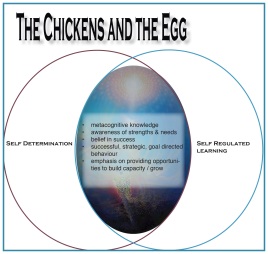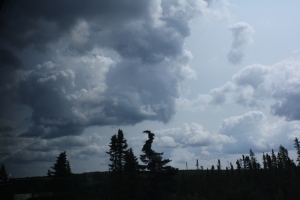But what about yin. In my later years as I start to practice yoga with more determination to stretch further, I realize that I am more of a yin than a yang person. In fact, as I look over my writing I realize that this concept of yin dominates. I recently observed to a friend of mine, “It seems like my character always ends up, alone, in a room by him or herself thinking about life”. Without fail, my introspective nature leaches into my writing. If I wanted to write poetry, this would not be a problem, however, for the past couple of years I have been working on a novel.
Traditionally speaking, novels are yang. Think about it. Take the basic plot that you learn in elementary school. You begin with an initial incident, develop setting/character and establish conflict. Hopefully, you get all of this quickly because if the reader isn’t hooked within those few pages then you’ve lost your audience. Everything in your story leads to that final scene where the protagonist battles it out to the bitter end. This scene will be fraught with action, emotion, and near death circumstances.
Joseph Campbell took that basic plot pattern a step further when he developed his theory about the heroic journey. This monomyth is an archetypal one which runs beneath the surface details of all stories and, as Joseph Campbell points out in his writing, also runs throughout our lives. Perhaps, this is why it is so powerful and why Hollywood does so well at the box office. In spite of the superficial nature of many of these movies, action adventure stories still predominate the main stream. Heroes continue to defeat the “dragon”, win the girl, gain the riches, and return home “kings”of the world. The classical hero lives.
But what about those other stories, you say? The unhappy stories. The tragedies. The antiheroic stories. The fallen hero stories. What about Trainspotting, MacBeth, Catcher in the Rye, or even Batman, the Dark Knight Rises and Watchmen. Lord of the Flies. The Walking Dead. Breaking Bad.
In many ways, these stories break out of the Monomyth pattern. Quite often, there is no happy ending. The hero does not get the girl. Nor, does the hero gain riches or return home a winner. However, if you look closely at the stories you will notice a couple of things. First of all, they do fall within the cycle even if they don’t fulfill the entire pattern. Antiheroic stories for example, exist within the “abyss”. In this dystopic world the hero is stuck and is unable to gain his revelation which can lead to a transformation. Even though antiheroic stories end with the hero being unable to effect his own life, the people surrounding him, his government, and his world the stories generally contain a yang element because the hero tries to create change.
If Yang is the masculine principle. If it is light, active, outward and upward moving then what does that say about the literature we read today? Have we been conditioned to read from a masculine point of view? If so, what would happen if the writer were to write a story using a yin perspective? If a story was developed upon the feminine pattern? Or the goddess archetype?
According to yinyoga.com, yin describes things that are relatively dense, are heavier, lower, more hidden, more yielding, more feminine, more mysterious, and more passive. A person practicing yin yoga strives to hold a stretch for 20 minutes or longer. The goal is not to move swiftly from one pose to the next, rather the goal is to release the tension in the muscles so that you can give into the stretch. Thus, the strength of yin is to absorb the pain and move beyond it.
I have encountered stories that are yin. At least, they dwell longer on the yielding to life, rather than the “doing” in life. Life of Pi, Griffin and Sabine, The Tattoed Map, Orlando, and The Grand Budapest Hotel come to mind. Looking at and contemplating my list, I realize they all have certain things in common. An Eastern mindset or influence. A vast landscape upon which the hero enacts his/her story. A broader sense of time. As more of these stories make it to the big screen, and capture the attention of mainstream audiences I wonder if this type of writing will gain in popularity? Have we had a surfeit of yang, and are we now looking to balance our lives with a little bit of yin?
When I consider stories like The Grand Budapest Hotel, however I appreciate the brooding mysterious nature of time that never seems to change yet, I also love the adventure. I enjoy the characters’ moral evolution in The Walking Dead , but would this exploration be as interesting without the zombie battles? In the end, Pi’s life boat makes shore and he reconnects with life, and Griffin leaves the comfort of his home to find Sabine.
Where does this leave me with my own writing? Perhaps, it is time for my characters to leave the room. As Taoists would point out Yang cannot exist without Yin, Yin cannot exist without Yang.


